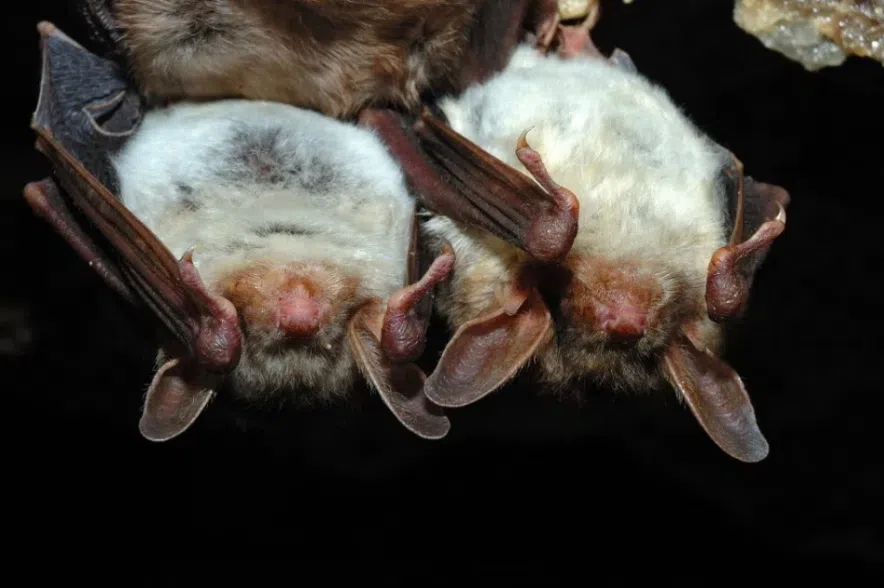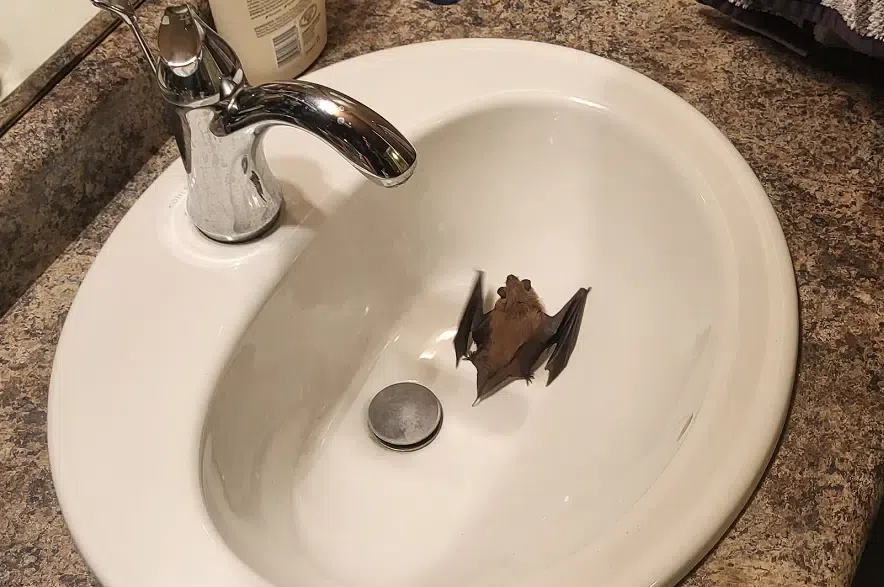In the past few months, a number of bat encounters and bites have been reported to the province.
The number of reports grew high enough for health officials and the Ministry of Environment to put out a warning.
Read more:
- Health officials warn more people are being bitten by bats across Sask.
- Increase in animal bites prompts warning from SHA
- Wildlife rescue dealing with growing problem of drivers hitting geese
With more bat-related incidents being reported, the Ministry of Environment shared some safety tips when dealing with the flying creatures.
Erin Swerdfeger, a species at risk zoologist with the Ministry of Environment, said there are a few ways people can deal with bats on their property.
If someone finds a single bat in their house, which is common during this time of year, Swerdfeger said it’s an easy fix.
“If you’re just in a room and there’s access to the outside through a window or a door, you can shut all the other doors and windows in the house,” she said. “Leave that one access point open, turn off the lights, turn off things like ceiling fans that can be harmful, and just let the bat leave on its own.
If a bat is in an area of the home where it’s unable to fly out on its own, Swerdfeger suggests using a box to catch it.
“Wait till (the bat) landed, and then poke air holes in a box,” she said. “We recommend wearing thick leather gloves and using this container. You can gently place it over the bat, and then slide a piece of cardboard gently underneath, sort of like the idea of trapping a spider under a glass.”
Swerdfeger said the best time to release a bat is at dusk.
The other most common occurrence is a group of bats in a barn or a similar structure. Swerdfeger said May and September are the best months to evict a bat.
“We recommend working with a licensed pest control operator,” she said. “They know what to look for in a building, they know where to go, and they can put up what’s called an exclusion device, or a bat cone, which is essentially a one-way exit.”
That allows a bat to leave on its own—which it does most nights—but it won’t allow them to re-enter the property, according to Swerdfeger.
“After all the bats have been confirmed to be out of that area, the pest control operator can go in and seal off those areas permanently,” she said. “Sometimes this can take a few tries, but that’s the easiest and safest way to get that out of your house.”
Bats are a protected species, which means they can’t just be killed.
“If you wanted to disturb their place of habitation or kill them, then you would need a license from the Ministry of Environment,” Swerdfeger said. “Where they live and the bats themselves are protected.”
This is due to some bats being an endangered species.
“The little brown myotis and the northern myotis are federally listed as endangered,” Swerfeger said.
The hoary bat, silver-haired bat and the eastern red bat have also been considered endangered by the Committee on the Status of Endangered Wildlife in Canada, according to Swerfeger.
When it comes to handling bats, Swerdfeger said she wants people to remember one thing.
“It’s important to remember that the bat is probably scared and not where it wants to be,” she said. “It’s not looking to harm humans; we do want to keep both bats and humans safe.”












